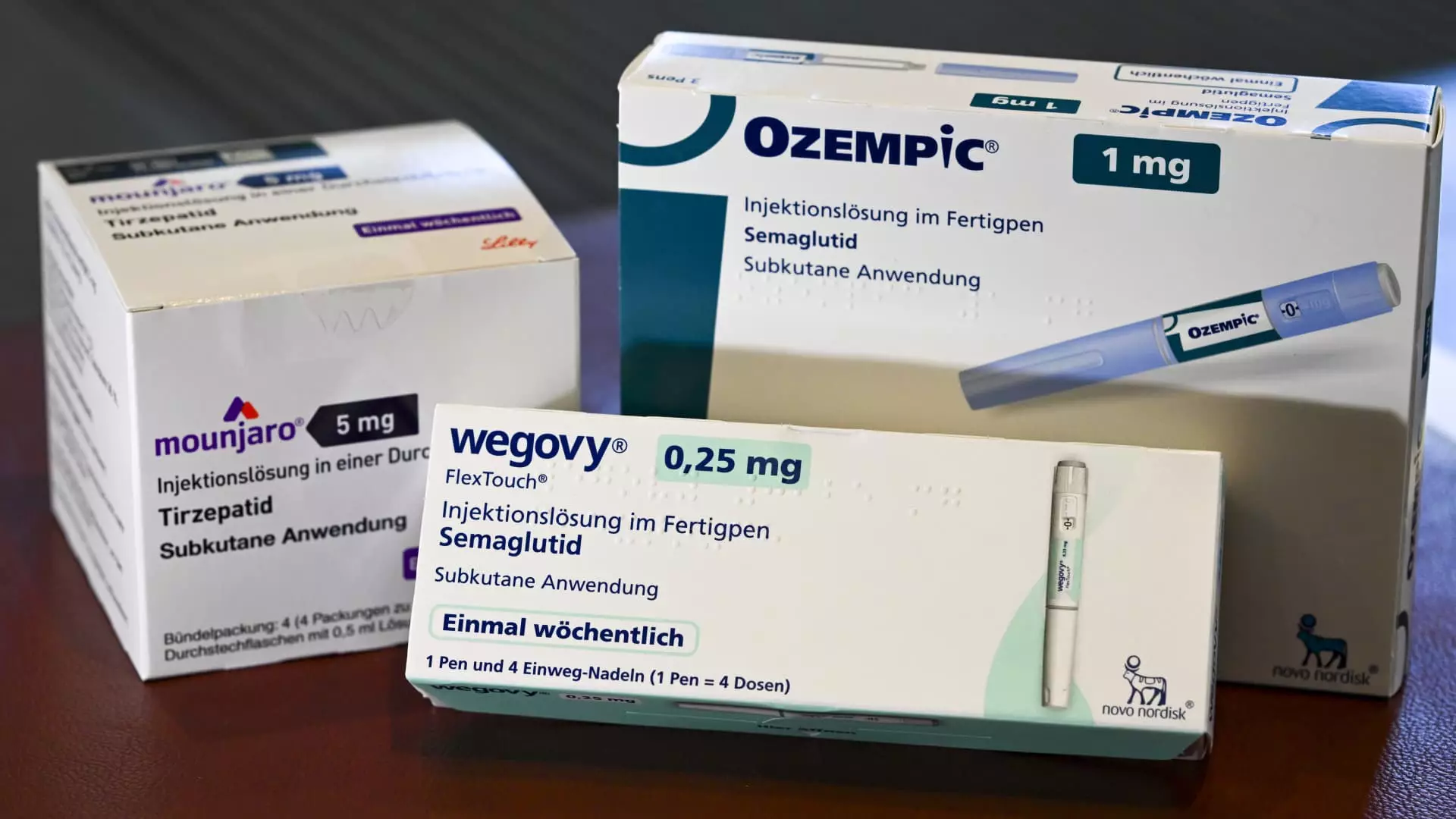The advent of groundbreaking medications such as Mounjaro, Ozempic, and Wegovy has ignited a fervent debate surrounding their rising costs and long-term benefits. The drugs, classified as GLP-1 receptor agonists, have seen an exponential increase in demand, making it difficult for employers to balance the immediate financial burden with the prospect of improved employee health down the line. While health benefits are not always quantifiable in monetary terms, the data emerging from organizations like Aon indicates that the short-term capital infusion required for these drugs may pave the way for significant savings in the future.
Greg Case, Aon’s CEO, emphasizes the unique nature of the findings. According to Aon’s recent analysis, the immediate reduction of major cardiovascular incidents by 44% among patients on GLP-1s cannot be overlooked. The realities of the healthcare landscape suggest that high-cost interventions can ultimately lead to a healthier workforce, thus sparking a critical conversation regarding the ethics and pragmatism of investing in these advanced treatment options.
The High Price of Health
The current price tag for GLP-1 medications hovers above a staggering $1,000 per dose, which raises a legitimate alarm. Naturally, employers are wary of shelling out considerable funds for medications that may lead to initial cost surges due to increased doctor visits and monitoring. Patients are reporting more frequent medical interventions in their first year as they confront underlying conditions such as sleep apnea and GERD, all of which contribute to rising overall healthcare costs.
However, it’s this very apprehension that becomes a barrier to embracing innovative treatments. Aon’s data shows that the higher costs incurred in the initial 12 to 15 months are merely a precursor to significantly reduced healthcare needs over time. As workers adapt to these medications, they witness tangible health improvements that substantiate the initial investment. The reduction in more severe healthcare outcomes, like heart attacks and strokes, becomes a compelling argument for taking the plunge, as the costs not only balance out but begin to generate a genuine return on investment (ROI).
Pivotal Outcomes from GLP-1 Use
One of the most astonishing revelations in Aon’s findings is the 7% decline in overall healthcare costs for patients by the end of their second year on GLP-1s. Even more compelling is that those who strictly adhere to their medication schedule can realize savings of up to 13%. These data points reflect not just an incremental change but rather a potential paradigm shift in how we approach chronic condition management. The empirical evidence positions GLP-1s as not just a burden but a transformative solution that could reshape our healthcare infrastructure.
By preventing severe complications related to obesity and diabetes, the drugs can drastically lessen the reliance on expensive emergency interventions, providing a pathway for sustainable healthcare. Case underscores, “You can do this in a way that has an ROI, that will literally be an economic return.” This assertion moves beyond mere statistics; it hints at a systemic revolution in employer-sponsored health coverage, wherein preventative care takes precedence.
A Call for Innovative Health Programs
Harnessing this newfound understanding, Aon has paved the way by launching a subsidized GLP-1 weight management program tailored for their own workforce. The initiative includes virtual wellness consultations and home-testing kits designed to facilitate adherence to the prescribed drug regimen. By putting theory into action, more employers may consider adopting similar measures, recognizing that the initial fiscal outlay can yield long-term benefits for both employees and the organization at large.
Such progressive steps signal a confronting yet necessary evolution in employer health benefits strategy. They also raise pivotal questions—what does it truly mean to value health? Are businesses prepared to see beyond the immediate expense to embrace solutions that prioritize chronic condition management through preventive care? These inquiries are crucial as a society strives to balance financial viability with the ethical imperative of fostering comprehensive health options for all.
The challenge lies not in the cost of these medications but in the willingness of businesses and policymakers to confront the underlying health issues that fuel these costs in the first place.

